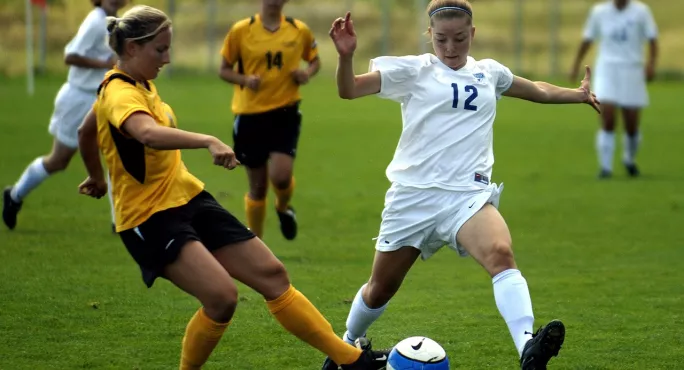- Home
- How the Lionesses are inspiring a generation of girls
How the Lionesses are inspiring a generation of girls

It seems like a case of déjà vu. Millions of people will be glued to their screens tonight, watching to see if England can make it through to the final of the biggest tournament in football.
But, unlike the men’s football team, the Lionesses are far from underdogs. They reached the semi-finals of the Women’s World Cup in 2015 and, this year, they have a real chance of nabbing the trophy from the US (the reigning champions) and being officially recognised as the best in the world.
But regardless of whether the Lionesses can beat the US in tonight’s semi-final - our team’s biggest match in the tournament so far - I’ll be happy: they (and we) will still emerge victorious.
Why? Well, first off, there has been a seismic shift in the attitudes of the football-watching audience. This year, the record for peak TV viewing figures was broken when the England team faced Cameroon - over 40% of viewers were tuned in to the match.
And while the men’s tournament saw only a rise in the number of waistcoats being sold, the England women’s team are doing more than changing fashion: they are changing our culture. They have awoken mini-lionesses inside all of us, and in school playgrounds up and down the country, we can see a shift in attitudes towards girls playing football.
Peter Ruddick, deputy head of South Hetton Primary School - the former primary school of England captain Steph Houghton - has definitely noticed a change in attitudes.
“We’ve noticed more girls playing football at playtime, in our sports team and in local clubs,” says Ruddick. “Our girls are inspired by the fact an England captain came from our school, and can see where their hard work can get them.”
This is where the increase in coverage has made a difference. More women’s football on the television has normalised it. Girls of the past who might have stopped playing because of feeling self-conscious or ‘odd’ for wanting to play something that has long been considered a sport for boys are no longer held back by those misconceptions.
It’s been a long road to get to this point. Florence Dixie, the president of the British Ladies’ football club, wrote to the Pall Mall Gazette in 1895 - when football itself was still in its infancy - recounting a time she went to a ball and had to listen to a woman complaining about what female footballers wore. The woman in question said it was “quite too shocking!” to see a woman’s calves on display. Dixie felt this complaint was somewhat rich coming from someone who was dressed with “pinched in waists, high-heeled shoes, and grotesque balloon-like shoulders hunched and blown out for all the world like huge tumours”.
At the time of Dixie’s letter, the men’s game had permitted professionalism for a decade. It took the women’s game another eight decades for the first professional league to be formed. And even now, the pay and bonuses for top female footballers is dwarfed by male players’ earnings - the total prize money for the entire Women’s World Cup tournament, $30m (£24m), is less than the $38m prize given just to the French men’s team for winning last year’s World Cup.
And arguments that there is less of an interest in the women’s game are ringing hollower than ever. The Lionesses’ kit has been flying off the shelves - it’s been dubbed “the best England strip in years”. And it isn’t just in the UK that people are putting their hands in their pocket for women’s football kit - across the pond, the US women’s team football shirt has broken a record to become Nike’s best selling shirt of all time.
While there is still a way to go in ensuring equality, these societal changes around the image of women’s football are rippling down to our playgrounds. Ruddick has noticed a changing attitude in his male students over the years. “Boys are much more accepting of girls playing football,” he explains. “Boys and girls are really happy to play together. The girls are treated as equals by the boys in their own team, and by the opposition.”
And it isn’t just the children who see girls football differently. It’s the adults who have changed their views, too. “Parents encourage girls to play football far more now, and fathers are just as keen for their daughters to play as they are for their sons. I’ve noticed it in our own school, and also in our local area.”
So it really doesn’t matter what the outcome is tonight. Win. Lose. The real winners are the next generation of football players and football fans who don’t see the women’s game as anything out of the ordinary anymore. We’re no longer niche: the girls have gone big time.
Keep reading for just £1 per month
You've reached your limit of free articles this month. Subscribe for £1 per month for three months and get:
- Unlimited access to all Tes magazine content
- Exclusive subscriber-only stories
- Award-winning email newsletters



